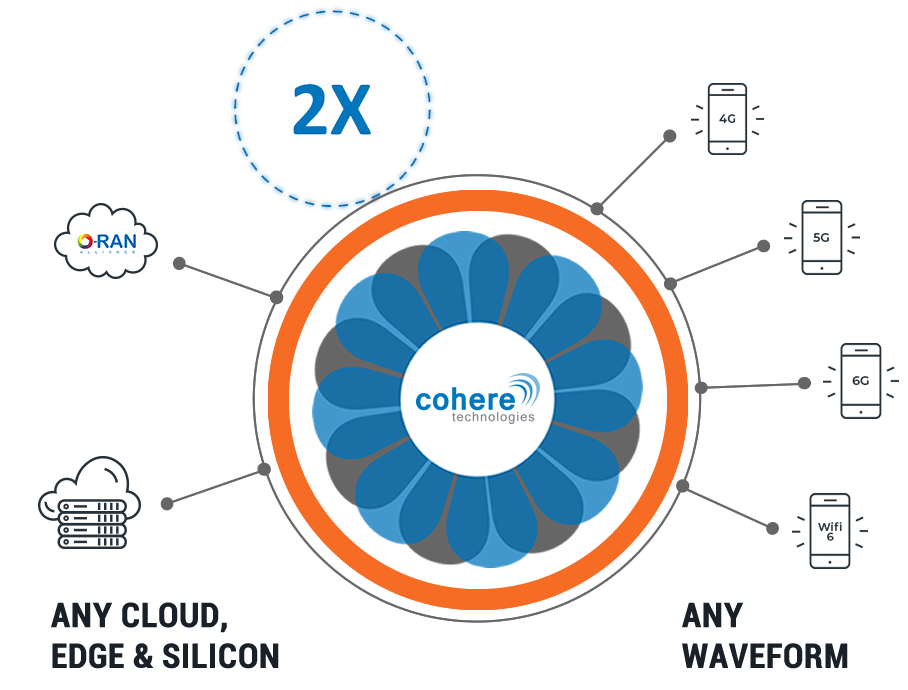
Last week Vodafone announced the results of a 5G Open RAN lab trial leveraging a SW solution from Cohere Technologies in partnership with Intel, VMware and CapGemini Engineering. Collectively, the technology partners demonstrated an end to end, multi-vendor, open platform and achieved “2X spectral efficiency” using Cohere’s Spectrum Multiplier capability. Cohere was proud to be part of this project as Vodafone demonstrated that Open RAN is far more than simply “breaking open” the current closed network. Vodafone showed that opening the network enables profound innovation that is standard complaint and drives significant improvements in network performance and user experience. Intel demonstrated that the vision for FlexRAN which was started almost a decade ago will not only scale, but it can also host innovation in an architecture that has been designed to be open since Day One. Open RAN is here. It already works.
In February 2020 Cohere demonstrated the same “2X” benefit on 4G. Thus, the 5G demonstration with Vodafone confirms that Cohere’s solution is fully standards compliant and will work on “Any G” without any changes to the handsets, antennas, or radios. Naturally, the next step will be to combine 4G and 5G in the same platform, solving a critical objective that remains quite challenging in the wireless industry using conventional methods from legacy vendors.
While spectral efficiency is extremely important to operators (consider the $80+ Billion raised in the recent US C-block auction), perhaps the most interesting opportunity ahead is to leverage the architectural options provided by Cohere’s approach. By moving the scheduler to the edge cloud, enterprise integration and network slicing goals that have alluded operators can be realized. This is the monetization opportunity that was the core justification for 5G from the outset, but latency limitations of conventional approaches simply require that network intelligence is being pushed further to “cellular edge”. Of course, this prevents the RAN from moving to a cloud architecture or leveraging the massive benefits of AI engines that could sit next to the potential cloud control plane to simply network design, implementation, operation and monetization.
Stay tuned for further announcements as Cohere continues to work with leading global operators to test and deploy new and innovative solutions. Decades of work in virtualizing network functions can be leveraged to determine the optimal architecture going forward. Traditional public cellular networks, along with new private 4G/5G and Wi-Fi enterprise networks can explore true convergence across topologies with a common control plane architecture. This will lead to radically simpler, more cost-effective, robust networks that will scale naturally.
I’ve had the privilege of being part of the wireless industry since 1986, helping build and design analog networks followed by 2G, 3G, 4G and 5G. This is fun stuff, and the stakes are getting bigger. Given the opportunity to build radically simpler, more cost effective and robust networks, why would anyone choose to keep the same old products from the same old suppliers?
The best is yet to come.
Ray Dolan, Chairman and CEO


